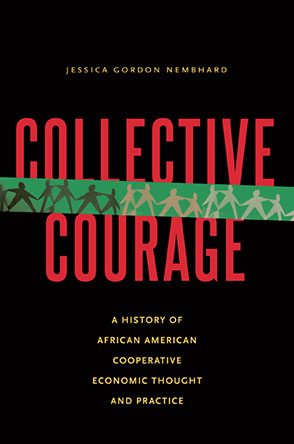1959
“When he was 9 years old, Ron, without my parents or myself knowing his whereabouts, decided to take a mile walk from our home down to the library,” Carl tells his friend Vernon Skipper.
The library was public, Carl says — “but not so public for black folks, when you’re talking about 1959.”
“So, as he was walking in there, all these folks were staring at him — because they were white folk only — and they were looking at him and saying, you know, ‘Who is this Negro?’
“So, he politely positioned himself in line to check out his books.
“Well, this old librarian, she says, ‘This library is not for coloreds.’ He said, ‘Well, I would like to check out these books.’
“She says, ‘Young man, if you don’t leave this library right now, I’m gonna call the police.’
Carl McNair says that his brother, astronaut Ronald McNair, saw possibilities where others only saw closed doors.
StoryCorps“So he just propped himself up on the counter, and sat there, and said, ‘I’ll wait.’ ”
The librarian called the police — and McNair’s mother, Pearl.
When the police got to the library, Carl says, “Two burly guys come in and say, ‘Well, where’s the disturbance?’
“And she pointed to the little 9-year-old boy sitting up on the counter.
“And he [the policeman] says, ‘Ma’am, what’s the problem?’
By then, the boys’ mother was on her way, Carl says.
“She comes down there praying the whole way there: ‘Lordy, Jesus, please don’t let them put my child in jail.’ And my mother asks the librarian, ‘What’s the problem?’ ”
“He wanted to check out the books and, you know, your son shouldn’t be down here,” the librarian said, according to Carl.
“And the police officer said, ‘You know, why don’t you just give the kid the books?’
“And my mother said, ‘He’ll take good care of them.’ ”
So, the librarian reluctantly handed over the books. And then, Carl says, “my mother said, ‘What do you say?’ ”
And Ron answered, “Thank you, ma’am.”
Ron McNair’s brother, Carl, recalls a trip to the library in South Carolina.
1967
Ron McNair graduates from high school as valedictorian.
1976
Ron McNair receives his Ph.D. in physics from MIT. His thesis concerns lasers.
1978
Ron McNair is one of the first three African Americans selected to join the astronaut corps – and one of 35 selected from an application pool of 10,000.
1984
Ron McNair is a mission specialist on Challenger mission STS-41B. Highlights of the mission include untethered space walks and the launch of the first satellite that was refurbished after a previous mission. Incidentally, McNair becomes the first astronaut to play the saxophone in orbit.

1986
Ron McNair, along with Michael Smith, Dick Scobee, Ellison Onizuka, Christa McAuliffe, Gregory Jarvis, and Judith Resnick, is meant to reach orbit on Challenger. Normalization of deviance betrays them.
French composer Jean Michel Jarre had been invited to perform in Houston later that year, and one of the pieces was to be performed by McNair from orbit. Upon hearing of the Challenger disaster, Jarre had been inclined to cancel the concert, but was begged not to; it became a tribute to the astronauts. The concert, which included projections onto nearby buildings, stops traffic and broke attendance records.
The piece that McNair was meant to play is renamed Last Rendez-Vous (Ron’s Piece) – ‘Challenger’.
2011
The Ron E. McNair Life History Center opens at the old Lake City library building — the same library that tried to turn him away 52 years previously.
2020
A children’s book about McNair’s visit to the library, Ron’s Big Mission is read to a second-grade class at an elementary school in Missouri.
A parent complains.
The principal responds by reading the book to the entire school.

 Today I purchased the book
Today I purchased the book ![[Picture of general orders made by General Granger in Galveston, Texas on 19 June 1865]](https://www.readingreality.net/wp-content/uploads/2022/06/General_order_No._3_of_June_19_1865-675x1024.jpg)